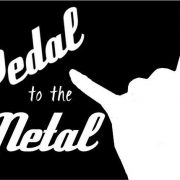How does the brain control movement?
In neurosciences, we have long thought that if it is possible to accelerate movement with one part of the brain, it is possible to decelerate movement with another component.
Simply put, we have considered that the brain had one pedal for accelerating and one pedal for breaking.
Researchers from the Howard Hughes medical institute have demonstrated that this break pedal was a little bit more than a break pedal.
What they were able to demonstrate is that when we put less pressure on the break pedal, not only did we stop breaking, per se… the speed of movement actually increased!
The opposite was also shown. If we release the accelerator, movement actually slows down.
You will tell me that this all makes sense when it comes to a car. Thing is, up until now, we thought this was not commonplace for the brain. We thought that it was only possible to accelerate… when accelerating, for example.
This study demonstrates that we use these two systems simultaneously in the context of movement production.
The pedal and the break, at the brain level, are the basal ganglia. The cortex and the cerebellum activate them. An optimal posture, because it is a reflection of high quality inputs to the cerebellum, can be one way to improve the quality of our movements.




